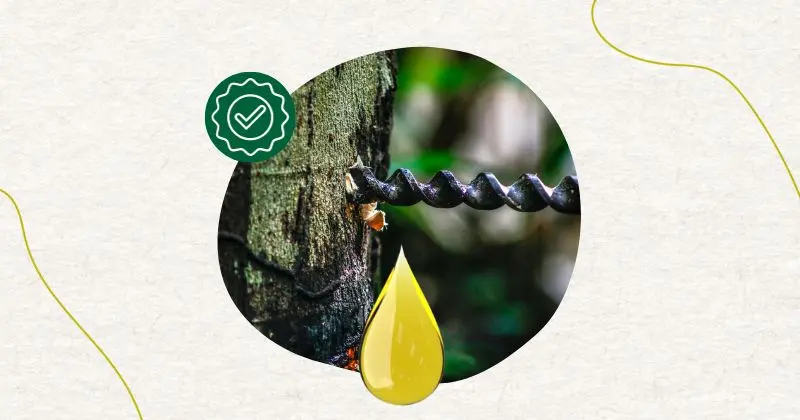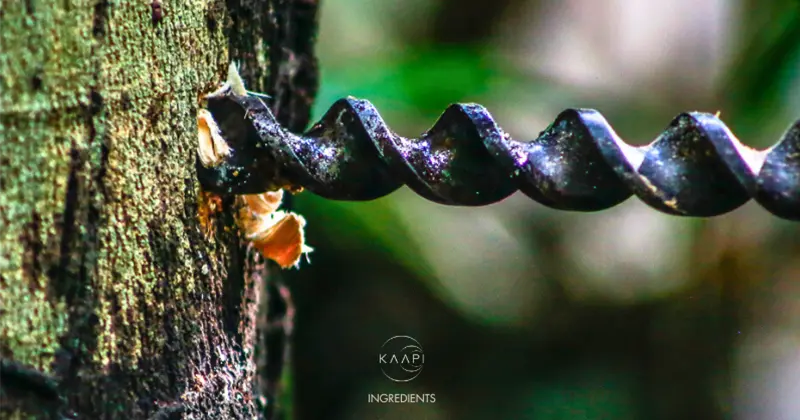Copaiba oil has healing properties that catch the attention of the aromatherapy industry. What not everyone knows, however, is that some complex factors can interfere with the purity of the ingredient and the effectiveness of its healing actions.
The quality of copaiba oil encompasses not only the oil itself but also extends to the extraction process and conditions that affect the chemical composition of the ingredient.
In this content, with the contribution of Kaapi Ingredients’ General Director, Eduardo Mattoso, we will explore the factors that influence the quality of copaiba oil and how the industry can identify them.
1. Voluntary adulteration
This is the primary issue when it comes to the quality of copaiba oil. Cases of voluntary adulteration, meaning the mixing of copaiba oil with vegetable oils, such as soy, corn, and other cheap triglycerides, occur quite frequently. Adulteration can be identified through chromatographic analysis after the appropriate hydrolysis of long-chain esters.
However, because these oils mix well with copaiba oil, contamination is not easily visible to the eyes, and there are limited resources available at the source locations to detect it. The best way to prevent adulteration is to have a network of reliable collectors.
“Kaapi has developed its own methodology to identify adulterations of this nature at the source, and we also work closely with our suppliers. After several years of selection and field personnel training, we are proud to say that this problem has been virtually eliminated from our supply chain,” says Eduardo.
2. “Aggressive” collection
The way copaiba oil is extracted from the tree may impact the quality of the ingredient. Even though the oil can naturally drip from the trees, in commercial operations, the trunk of the copaiba tree is drilled until the oleoresin flows and is collected in appropriate containers.
Once the flow ends, the hole is sealed to prevent contamination and insect infestations. “This proper process of drilling into the tree and using a cap to protect the interior of the tree allows the oil to accumulate for later collections. A well-managed copaiba tree provides oil for generations of riverside dwellers for several decades,” says Eduardo.
While it may not directly affect the quality of copaiba oil, this care in collection is fundamental for a sustainable operation, especially considering that there are loggers who use chainsaws to open a hole in the tree and collect the oil, an action that often leads to the death of the tree.
3. Material from different species
The origin of the material is a quality issue that the industry faces and is related to the botanical nature of the trees and the chemical composition of the oil. Copaiba is a wild tree that produces oil only after reaching adulthood – which can take decades. It is a collection from the wild, and there is no commercial cultivation.
Moreover, there are over 16 species of the Copaifera genus in the Amazon Rainforest, each producing oil with slightly distinct characteristics. “As part of Kaapi’s quality assurance process, we analyze the chemical composition of each received batch to then assemble new batches according to the needs of each customer and their applications,” says Eduardo.
Even if a batch is composed of materials from different copaiba species – which is natural – the chemical composition is quite stable when obtained from a reliable supplier. The main physical-chemical quality indicators are:
- Color;
- Odor;
- Acidity index;
- Contents of the main components: beta-caryophyllene, alpha-humulene, alpha-bergamotene, gamma-muurolene, beta-bisabolene, and delta-cadinene.
How to recognize quality Copaiba oil?
There are well-established quality standards for Copaiba oil. The most noticeable differences lie in the number of esters and solubility. Eduardo explains that products adulterated with vegetable oil have a high number of esters, low solubility in alcohol, may exhibit phase separation, and have an odor of oxidized fat.
Currently, there are many serious and dedicated suppliers offering quality ingredients in distinct markets such as Europe and the United States. However, the lack of knowledge regarding the characteristics of the ingredient often leads to the offering of adulterated materials at the source, not always intentionally. The path is to seek experienced and reliable suppliers.
Kaapi Ingredients: stringent standards for Copaiba oil quality
 Kaapi Ingredients ensures that its Copaiba oil is collected from sustainable sources and free from contaminants. In other words, it is 100% pure and natural. It has a lower number of esters, presents a homogeneous appearance, and is more soluble in alcohol compared to an adulterated product.
Kaapi Ingredients ensures that its Copaiba oil is collected from sustainable sources and free from contaminants. In other words, it is 100% pure and natural. It has a lower number of esters, presents a homogeneous appearance, and is more soluble in alcohol compared to an adulterated product.
The UEBT (Union for Ethical BioTrade) seal is a significant quality differentiator for Kaapi’s extraction process, attesting to ethical and sustainable practices. Additionally, ISO 9001 also guarantees defined processes and a quality standard.
Also, it provides employment and income for many people living in the forest who rely on it for their livelihood.
Want to learn more about Kaapi Ingredients’ Copaiba oil? Schedule a call with our sales team!




